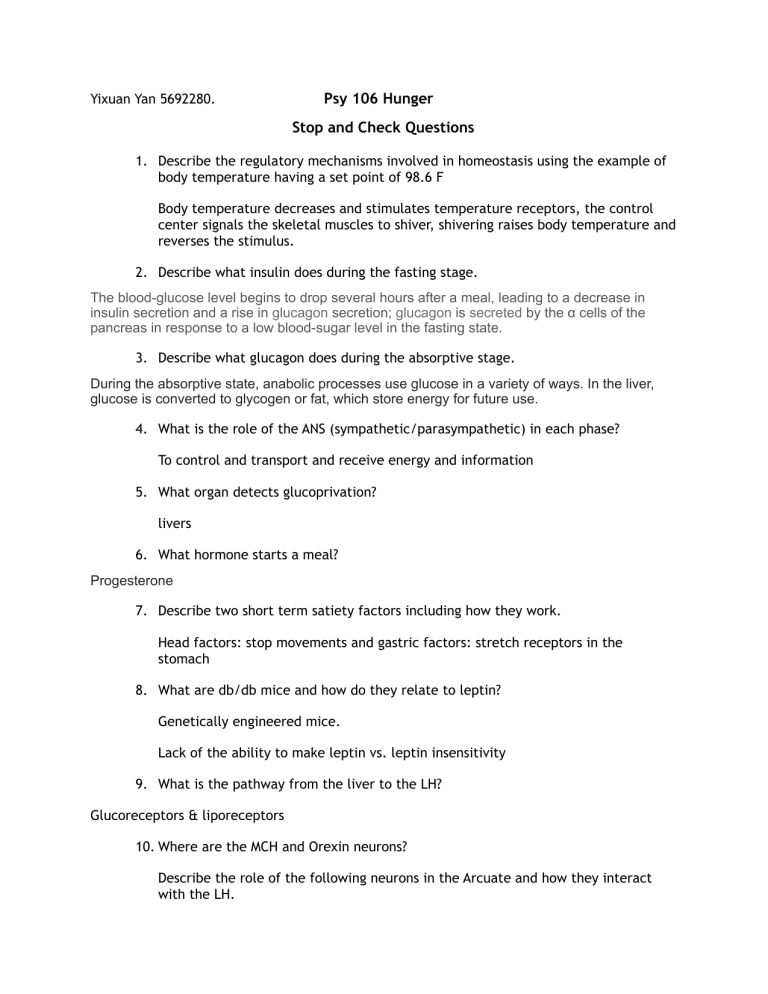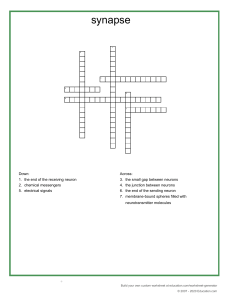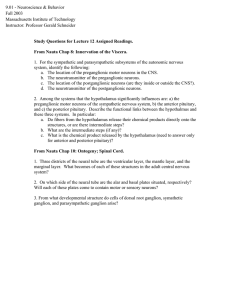
Yixuan Yan 5692280. Psy 106 Hunger Stop and Check Questions 1. Describe the regulatory mechanisms involved in homeostasis using the example of body temperature having a set point of 98.6 F Body temperature decreases and stimulates temperature receptors, the control center signals the skeletal muscles to shiver, shivering raises body temperature and reverses the stimulus. 2. Describe what insulin does during the fasting stage. The blood-glucose level begins to drop several hours after a meal, leading to a decrease in insulin secretion and a rise in glucagon secretion; glucagon is secreted by the α cells of the pancreas in response to a low blood-sugar level in the fasting state. 3. Describe what glucagon does during the absorptive stage. During the absorptive state, anabolic processes use glucose in a variety of ways. In the liver, glucose is converted to glycogen or fat, which store energy for future use. 4. What is the role of the ANS (sympathetic/parasympathetic) in each phase? To control and transport and receive energy and information 5. What organ detects glucoprivation? livers 6. What hormone starts a meal? Progesterone 7. Describe two short term satiety factors including how they work. Head factors: stop movements and gastric factors: stretch receptors in the stomach 8. What are db/db mice and how do they relate to leptin? Genetically engineered mice. Lack of the ability to make leptin vs. leptin insensitivity 9. What is the pathway from the liver to the LH? Glucoreceptors & liporeceptors 10. Where are the MCH and Orexin neurons? Describe the role of the following neurons in the Arcuate and how they interact with the LH. a. CART/a MSH neurons Inhibit the LH and PVN to stop eating and decrease parasympathetic activation b. NPY/AGRP neurons Activate the MCH and orexin neurons in the LH, also activate thePVN to stimulate eating and increase parasympathetic activation





